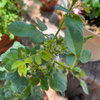Univ of Florida RRV alert
henry_kuska
10 years ago
Related Stories

MATERIALSInsulation Basics: What to Know About Spray Foam
Learn what exactly spray foam is, the pros and cons of using it and why you shouldn’t mess around with installation
Full StoryMore Discussions









anntn6b
growing_rene2
Related Professionals
Willowick Landscape Architects & Landscape Designers · Broadlands Landscape Contractors · Chesapeake Ranch Estates Landscape Contractors · Ellicott City Landscape Contractors · Flagstaff Landscape Contractors · Florham Park Landscape Contractors · Framingham Landscape Contractors · Hoffman Estates Landscape Contractors · Hurricane Landscape Contractors · Louisville Landscape Contractors · Waltham Landscape Contractors · Wayland Landscape Contractors · Kingsburg Landscape Contractors · Hueytown Landscape Contractors · Ferguson Landscape ContractorsMaryl (Okla. Zone 7a)
henry_kuskaOriginal Author
lookin4you2xist
Tessiess, SoCal Inland, 9b, 1272' elev
floridarosez9 Morgan
anntn6b
henry_kuskaOriginal Author
Maryl (Okla. Zone 7a)